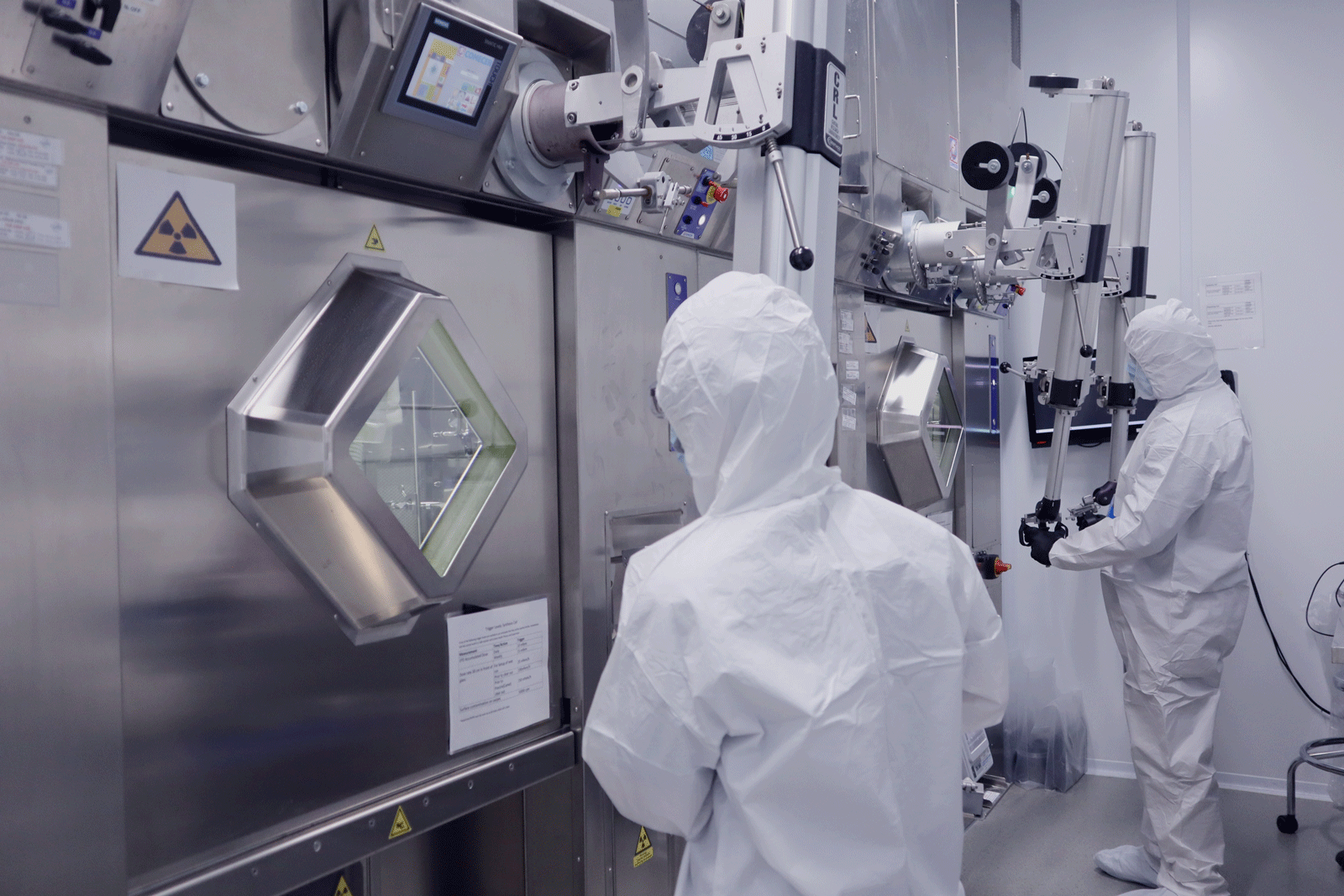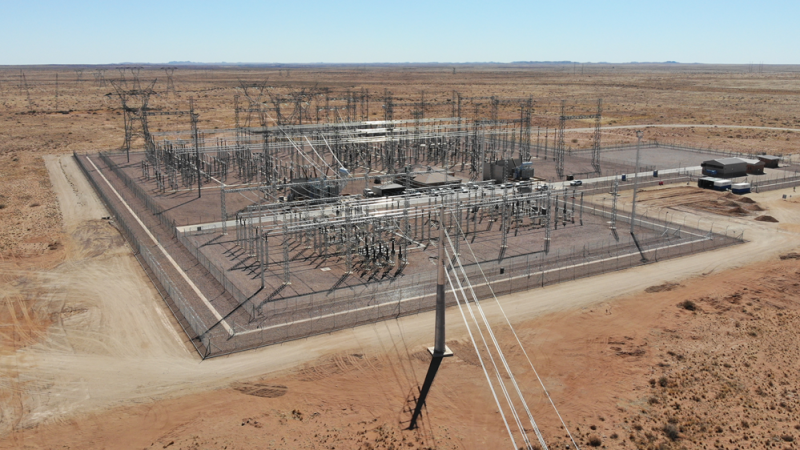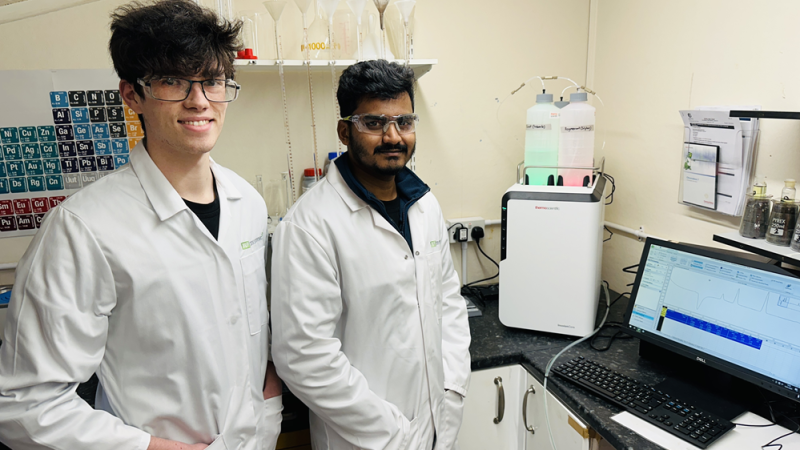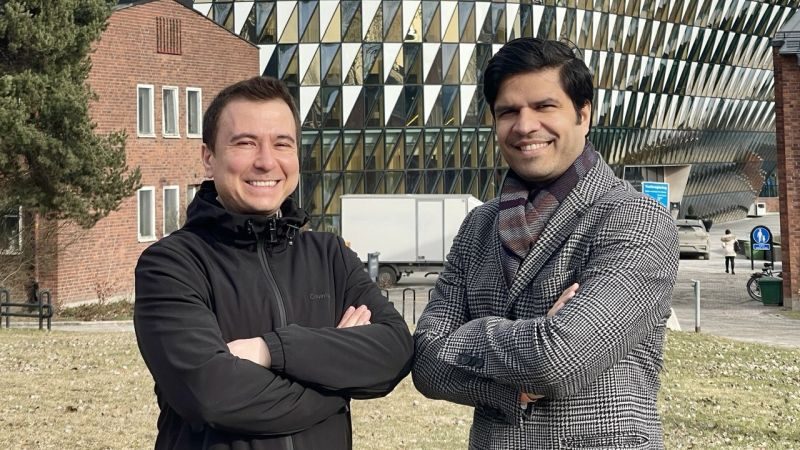AtomVie Global Radiopharma Inc. (AtomVie)’s name comes from two words, “Atom” and “Vie”, from the French for “Life”. Company CEO, Bruno Paquin is also French but insists the name wasn’t his idea. “It was a company-wide contest, and we really liked this entry,” he recalls. “It symbolises life coming out of the atom.”
AtomVie was born out of the Centre for Probe Development & Commercialisation (CPDC), which was founded in 2008. CPDC is a centre of excellence, a program designed to commercialise research from academic institutions and the CPDC is a McMaster University centre based out of Hamilton, Ontario.
“The goal was to provide a reliable source for radiopharmaceuticals for the province, starting with FDG ([F-18]-Fludeoxyglucose) for the diagnosis and staging of cancer,” Paquin says.
CPDC started as a research and development company, until 2014 when that side of the business was spun out into Fusion Pharmaceuticals, becoming a flagship firm in the industry. At the same time, the CPDC started offering fee-for-service contract manufacturing.
CPDC’s business grew to the point that the space on the McMaster University campus was no longer suitable. The CDMO (Contract Development and Manufacturing Organization) business unit was consequently spun out into AtomVie, in preparation for its next phase of growth. AtomVie is a global leader in the GMP manufacturing and global distribution of radiopharmaceuticals through a state-of-the-art facility that could accommodate multiple isotopes supported by a high-standard quality management system and global logistics and regulatory support. Building and launching that facility is its current main objective, while maintaining seamless supply of radiopharmaceuticals from the McMaster facility.
 A New Facility
A New Facility
“We are currently leasing laboratory and office space on the campus at McMaster University,” Paquin tells us. “It has become limiting because we are spread across four different buildings, on different floors. Still, even under those circumstances, the company is generating $25 million in revenues.”
To begin work on this new facility, AtomVie set out to acquire private funding. In 2022 the firm closed its Series A financing with Avego Management, LLC, which invested $40 million to launch the company.
“Since then, we have secured a 70,000 square feet facility, $90 million in financing and that money will build the new facility, buy all the necessary equipment, commission the facility, and fund tech transfer of the programs from the current facility to the new facility and staffing,” Paquin says. “This is the money we need for the current stage of expansion.”
This facility will strengthen AtomVie’s position as a globally leading CDMO, building on the excellent foundation from the CPDC. The firm offers its services for the development and validation of processes and analytical methods, manufacturing and global distribution for clinical supply and eventually commercial supply when products hit the market. AtomVie also offers regulatory support and in-house isotope production.
Paquin is the first to recognise that the facility is only part of the equation, however.
“I have to say in our current situation the facility is the limiting factor, but it can quickly become staff,” Paquin warns. “Since the launch of AtomVie, we have taken this very seriously. A high turnover can drag our operational costs up and efficiency down. So, we have introduced a series of benefits, compensations, pension plans and recognition and awards, as well as offering both technical and career planning training.”
The firm’s qualified staff are complemented by strong partnerships across the supply chain.
“We have the whole supply chain in radiolabelling distribution supported by strategic partnerships with isotope suppliers and freight forwarders to ensure manufacturing and supply of the final drug product is reliable, delivered on time and uninterrupted,” Paquin says.
This is just part of the list of qualities that makes AtomVie a leading contender in the industry.
“We have an excellent reputation for the quality of our work. Among the CDMOs operating in the field of manufacturing radioactive therapies, we are a pioneer as we have been doing it for a decade. We have supplied one of the first approved radiotherapeutics and are actively involved in Phase 2 and 3 pivotal trials,” Paquin explains. “We offer excellent reliability in production and most importantly we have extremely strong logistics expertise.”
 Beyond Just-in-Time Delivery
Beyond Just-in-Time Delivery
It is hard to overstate the importance of that logistics expertise. AtomVie has clients on nearly every continent, shipping drugs within Canada, and to the US, Europe, Australia, Asia, South Africa, and South America. These drugs have a short shelf life, as brief as two to 17 days, making logistics reliability critical.
“If you have six or seven days to get a drug to the injection site, everything needs to be working exactly as planned,” Paquin insists. “The smallest glitch at any point in the supply chain for production, labelling, or the transportation chain would compromise the drug. We have a very small window to get the drug there and we have been doing that efficiently for years.”
Fortunately, AtomVie has a range of solutions sourced through trustworthy service providers, but even then, it closely follows the transit of its drugs until they reach the clinical site. That process begins at the start of the supply chain. AtomVie is not a company that has the luxury of holding inventory.
“There’s no concept of inventory for the final drug product, we manufacture and ship on demand,” Paquin says. “When we start a batch, that batch has a defined number of doses for a defined number of clinical sites and defined patients. We don’t have details on who the patients are, but we know where they are and what they need. If there is a failure in the supply chain, the patient doesn’t get the drug.”
At each step, AtomVie incorporates as many controls as possible. Isotope supply is guaranteed by each step of the process being qualified with two or more vendors, as well as AtomVie’s own isotope production line. AtomVie also encourages clients to introduce their own redundancies with other vendors, so a glitch at any stage can be compensated for.
“In terms of production we have detailed master batch records to mitigate as much as possible any human error,” Paquin says. “We have extensive maintenance programs for our equipment and the same thing goes for quality control. We don’t just put our product in a truck or plane – we follow it at every step looking for hold-ups at customs or cancelled flights. We are always ready to find an alternative.”
Even before we ship a drug to a new destination, AtomVie has put in the homework. As Business Development Director, Ghadeer Shubassi explains, “Before we begin clinical supply, we test out the routes with transport studies and test shipments to make sure the drug reaches those destinations.”
Looking forward, AtomVie’s focus is on getting the firm’s new facility up and running. The goal is to have the whole facility delivered and operational by Q4 of 2024.
“Despite being four times bigger than our current facility in terms of space, we forecast it will be ten times more productive as we optimise the flow of personnel and production,” Paquin says.
While AtomVie is already working at full capacity in the current facility, AtomVie’s capacity is anticipated to expand by at least 10-fold as it expands into the new facility. Some of AtomVie’s future availability has been partially presold, with more opportunities available for clients and programs.’
As Paquin tells us, “The facility will be scalable for all levels of throughput, from low and mid throughput to highly customed high throughput manufacturing processes.”







